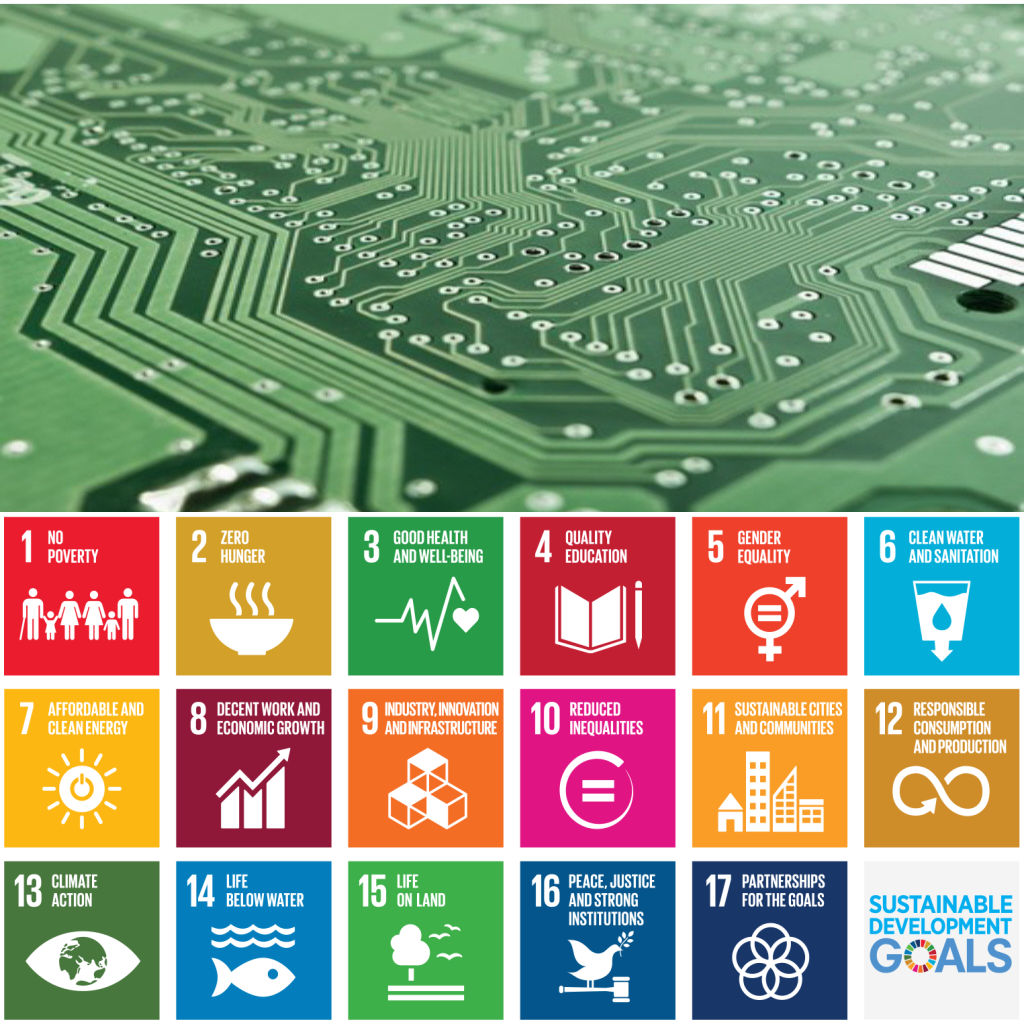Progress with 5G Digital Coverage in the UK & Developing World Implications

by David Fellows [1]
The 5G mobile communication offers the prospect of high bandwidth reception for rapid video downloads, gaming, instant replay coverage at major sporting events and simultaneous service to heavy concentrations of digital devices. It is a highly topical subject across the world including developing countries.
This article tempers expectations of widespread 5G coverage in developed countries on grounds of financial viability and suggests that developing countries are better served by centring digital infrastructure investment on broadband cable and lower frequency 4G mobile services.
Digital Communication costs and coverage
I start by introducing a sense of realism about internet speeds and coverage by looking at actual practice in the UK which has reasonably average internet services for a developed country.
Table 1: UK internet speeds
| User | Mobile |
Fixed Line |
Comments |
| Personal devices |
4G (15/30 Mbps) 5G (2/100+Mbps) |
Approx 30 Mbps (usually advertised as 50) |
4G reaches 75% to 90% of the population depending on provider. 5G has hardly started(see discussion below). All-fibre cabling of 120 Mbps will become common in the next decade. |
| Small/ Medium businesses |
– | 100Mbps/ 1000Mbps |
In this group call centres tend to need the higher capacity |
| Major businesses |
– | 1000Mbps+ |
Note: 4G speed depends on provider and time of day [2], the better the infrastructure provision the better the service. 5G is said to relieve congestion although this too is infrastructure-dependent (see Table 3). For some time to come, even in developed countries, 4G will outstrip 5G coverage by some considerable margin.
In 2016 Universities of Cambridge & Madrid undertook a study [3] into the viability of introducing 5G mobile communication in the UK. Tables 2 & 3 summarise some conclusions from the study.
Table 2: UK Demographic Profile (total
population 63 million)
| Settlement Type | Proportion of Population (%) |
Approximate Distribution of Total 5G Cost (%) |
| Urban | 8 | 2 |
| Suburban | 62 | 19 |
| Rural | 30 | 79 |
Notes: (i) total cost adds capex & opex (see Table 3 below); (ii) the study anticipates that the roll out of 5G will take place over the next decade.
Table 3: 5G Options for UK (selected from UC&M study)
| Aspect | Option S2 £bn |
Option S5 £bn |
Option S8 £bn |
| Features | One 50Mbps network sharedby 4 operators |
Using competitive 50Mbps networks except for ruralareas where a shared 50Mbps rural network applies |
Using two 50Mbps networks shared by 4 operators except for rural areas where a shared 10Mbps network applies |
| Capital Cost | 22 | 24 | 15 |
| Revenue Cost (10 yr NPV) | 13 | 17 | 10 |
| Study Conclusion |
Not viable; Scotland is dramatically more expensiveexcept for S8 |
Not viable; Scotland is dramatically more expensiveexcept for S8 |
Not viable; the lower rural bandwidth avoids the cost rising exponentially to cover the final 10% of population |
Notes: (i) Most 5G signals are highly directional, require a direct line-of-sight between the antenna and the device receiving the signal and can be absorbed by humidity, rain, and physical object including trees, therefore they don’t travel as far as the more robust, omnidirectional 4G signals (as a result they require very high aerial density and present problems for some applications under discussion such as driverless vehicles) [4]; (ii) 5G networks can make use of existing 4G aerial stock and cable support but the higher aerial density makes the transition from 4G very expensive; (iii) the cost of covering the most expensive 10% of population at 50Mbps is equivalent to that for the first 90%; (iv) the study assessed the total cost (capex & opex for 10years) of 5G coverage for the UK’s rail and motorway networks would be £0.922bn & £0.253bn respectively.
Part way through 2019 several UK mobile service providers have commenced or announced their intention to provide 5G coverage. Some have published city roll-out programmes although details of schedules, geographical boundaries and bandwidth are sketchy at present. None of this equates to a city-wide coverage commitment let alone national coverage. Unsurprisingly the focus appears to be areas of potential high traffic where improved service reliability will be the driving advantage. Available bandwidth could be as low as 2Mbps for entry level packages.
5G services may be offered for pop concerts, major sporting events, shopping malls, some public buildings and crowded city centres. Some of the infrastructure could be provided by venue owners or organisers as Wi-Fi is at present.
The European Union produced a policy document ‘5G for Europe: An Action Plan’ in September 2016 that seeks to drive progress towards realising substantial financial benefits from the technology. The Action Plan, quoted in a recent review of the Commission’s achievements, seeks to harmonise European preparations giving priority to infrastructure coverage of major urban areas and transport routes by 2025.
Implications for Developing Countries
- Given the financial viability challenges in developed countries such as the UK it is clear that rolling out 5G services in developing countries will be hampered to an even greater extent by the financial returns required to support infrastructure provision.
- 4G coverage is indisputably more readily viable than 5G and is a more obvious objective for developing countries for the foreseeable future. Governments need to consider their bandwidth licencing programmes accordingly.
- Conventional public Wi-Fi systems can offer mobile text communication to supplement overloading of 3G and 4G reception in public areas with high demand for digital services.
- In the author’s opinion 4G mobile coverage and fibre-optic cabling of CBD areas for super high bandwidth communication offer the basis for viable digital communication strategies in developing countries.
General conclusions
- At the present time commercial ambitions for 5G in the UK appear limited. The financial viability of the aerial installation costs on a large scale compared to 4G is a considerable constraint. For some time to come 5G may be largely confined to high income high demand locations and some venues where owners provide the necessary infrastructure as an added attraction. It is a solution waiting for a killer application or acceptance as a social status imperative. The current service and economic priority for mobile infrastructure must be the completion of 4G coverage. This reasoning would seem applicable throughout the world although it is reported [6] that Malaysia intends to adopt 5G fully by 2023. Malaysia is undoubtedly a leader in digital technology but this claim is something that requires clarification.
- It is generally presumed that the long-term intention of 5G service providers is transmission speeds of 50+Mbps but at current revenue levels this form of coverage is deemed to be unviable in UK rural areas. The UC&M study suggests that shared rural networks operating at 10Mbps would reduce cost significantly and a broadly similar cost reduction could be achieved by omitting 10% of the population (equivalent to 33% of rural population) from 5G coverage. Even these two reduced service options would still appear unviable assuming current service revenues.
- The UC&M study hints that technologies under development may deliver significant cost savings for 5G provision although details of how this might happen are not well understood at present.
- 5G viability in the UK and other developed countries would therefore seem to depend on some or all of: (i) restricted service provision targeting areas of high demand; (ii) technological advances bringing cost-savings; (iii) user willingness to pay higher fee rates for 5G than its predecessor services; and (iv) modest, possibly shared, bandwidth in rural areas.
- Given these 5G service limitations, upgrading to 5G-enabled smartphones may be a nuanced decision for many users for some considerable time. Roll-out costs and user hesitancy will, in turn, impact commercial investment.
In My Opinion
- Countries have much more to gain from improving the reach of 4G mobile communication than encouraging service provider interest in 5G roll-out which will be a niche offering for some years to come. Developing countries should not feel that they must jump now or miss the bus.
- 5G mobile communication is not a natural alternative to fixed cable support for business purposes. In this market fibre optic broadband cable services offer the ideal of high bandwidth, service reliability and relatively low cost.
[1] David Fellows is a specialist in public financial management and digital government reform and is a director of PFMConnect. He is a recipient of the Swedish Prize for Democratic Digital Service Delivery.
[3] See: https://assets.publishing.service.gov.uk/government/uploads/system/uploads/attachment_data/file/577965/exploring_the_cost_coverage_and_rollout_implications_of_5G_in_britain_-_oughton_and_frias_report_for_the_nic.pdf
[4] See: Lifewire https://www.lifewire.com/5g-vs-4g-4156322
[5] See: https://5g.co.uk/news/ee-5g-launch-plans-roadmap/4900/
[6] See: OpenGov Asia (10th September 2019): https://www.opengovasia.com/malaysia-will-fully-adopt-5g-by-2023/

